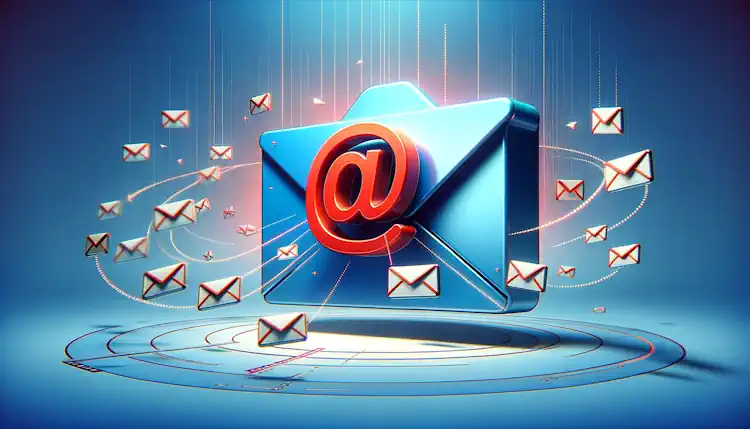Email deliverability is a critical factor in the success of any email marketing campaign. It’s not enough to craft compelling content and hit “send” – you need to make sure that your messages actually reach your subscribers’ inboxes.

Let’s look into the world of email deliverability and explore the strategies you can implement to maximize your chances of success.
Understanding Email Deliverability
Email deliverability refers to the ability of your emails to reach your subscribers’ inboxes successfully. It’s important to note that there’s a difference between delivery rate and deliverability rate. While delivery rate measures the percentage of emails that were accepted by the recipient’s server, deliverability rate takes into account whether those emails actually made it to the inbox or ended up in the spam folder. Several factors can influence deliverability, including sender reputation, email content, and technical configuration.
Building and Maintaining a Quality Email List
One of the most important aspects of email deliverability is the quality of your email list. A clean and engaged list is essential for success. To maintain a healthy list, regularly remove inactive subscribers and invalid email addresses. This helps improve your engagement rates and prevents your emails from being flagged as spam. Additionally, always obtain explicit opt-in consent from your subscribers to ensure they actually want to receive your emails.
Optimizing Your Email Content
The content of your emails plays a significant role in deliverability. Craft compelling subject lines that encourage opens without resorting to spam trigger words like “FREE” or “CLICK NOW.” Strike a balance between text and images in your email content, as too many images can trigger spam filters. Personalize your emails with relevant information to foster engagement and build trust with your subscribers.
Establishing a Positive Sender Reputation
Your sender reputation is like a credit score for your email-sending practices. It’s a measure of how trustworthy and reputable you are as an email sender. Factors that affect your sender reputation include your IP address, domain name, and the engagement levels of your emails. To improve and maintain a good sender reputation, focus on sending high-quality, relevant content to engaged subscribers. Monitor your reputation using tools like Sender Score and take prompt action if you notice any issues.
Configuring Technical Settings
Proper technical configuration is crucial for email deliverability. Implement email authentication protocols like SPF (Sender Policy Framework), DKIM (DomainKeys Identified Mail), and DMARC (Domain-based Message Authentication, Reporting, and Conformance) to prove the legitimacy of your emails. Consider using a dedicated IP address for high-volume sending to isolate your reputation. Implementing a double opt-in process adds an extra layer of verification and helps maintain a clean email list.
Monitoring and Analyzing Email Performance
To effectively master email deliverability, you need to consistently monitor and analyze your email performance. Keep track of key metrics like bounce rate, complaint rate, open rate, and click-through rate. Use email marketing analytics tools to gain insights into your campaign performance. Regularly monitor and address any delivery issues that arise. Conduct ongoing A/B testing to optimize your subject lines, content, and sending times for better engagement and deliverability.

There are several popular email marketing analytics tools available that can help you track, analyze, and optimize your email campaigns. Here are a few of the top tools:
- Google Analytics
- Integrates with most email marketing platforms
- Provides detailed insights into subscriber behavior and engagement
- Tracks website traffic and conversions generated from email campaigns
- Mailchimp
- Built-in analytics dashboard for tracking email performance
- Provides data on opens, clicks, bounces, and unsubscribes
- Allows segmentation based on subscriber engagement levels
- HubSpot Email Marketing
- Offers a comprehensive analytics dashboard
- Tracks email opens, clicks, bounces, and unsubscribes
- Provides data on subscriber growth and list health
- Constant Contact
- Includes a real-time analytics dashboard
- Tracks email opens, clicks, bounces, and complaints
- Provides data on subscriber engagement and mobile responsiveness
- Campaign Monitor
- Offers a detailed analytics suite
- Tracks email opens, clicks, bounces, and unsubscribes
- Provides data on subscriber engagement and geographic location
- AWeber
- Includes a robust reporting dashboard
- Tracks email opens, clicks, bounces, and complaints
- Provides data on subscriber growth and list segmentation
- GetResponse
- Offers an analytics dashboard with real-time data
- Tracks email opens, clicks, bounces, and unsubscribes
- Provides data on subscriber engagement and mobile responsiveness
- Sender
- Includes an analytics dashboard with real-time data
- Tracks email opens, clicks, bounces, and unsubscribes
- Provides data on subscriber engagement and list growth
- Sendinblue
- Offers a comprehensive analytics dashboard
- Tracks email opens, clicks, bounces, and unsubscribes
- Provides data on subscriber engagement and geographic location
- Klaviyo
- Includes a robust analytics suite
- Tracks email opens, clicks, bounces, and unsubscribes
- Provides data on subscriber engagement and purchase behavior
These tools offer a range of features and capabilities to help you gain insights into your email marketing performance. Choose the one that best aligns with your specific needs, budget, and the size of your email list.
Staying Compliant with Email Regulations
Compliance with email regulations is non-negotiable when it comes to deliverability. Familiarize yourself with key regulations like CAN-SPAM, GDPR, and CCPA, and follow best practices to ensure compliance.

This includes providing an easy way for subscribers to opt out, including your physical address in emails, and honoring unsubscribe requests promptly. Non-compliance can result in hefty fines and damage to your sender reputation.
To find comprehensive information on CAN-SPAM, GDPR, and CCPA, you can refer to the following official sources and resources:
CAN-SPAM (Controlling the Assault of Non-Solicited Pornography and Marketing Act):
- Federal Trade Commission (FTC) CAN-SPAM Act Compliance Guide
- FTC’s Bureau of Consumer Protection Business Center – CAN-SPAM Act
GDPR (General Data Protection Regulation):
- Official GDPR Website
- European Commission – Data Protection Under GDPR
- ICO (UK’s Information Commissioner’s Office) Guide to GDPR
CCPA (California Consumer Privacy Act):
- California Attorney General’s CCPA Website
- CCPA Text
- IAPP (International Association of Privacy Professionals) CCPA Resource Page
In addition to these official sources, you can also find valuable information and guidance from privacy and legal organizations, industry associations, and marketing publications. Some examples include:
- DMA (Data & Marketing Association) – Email Marketing Compliance Resources
- IAPP (International Association of Privacy Professionals) – Resource Center
- Privacy Law Blog by Hunton Andrews Kurth
Remember to stay updated with any changes or amendments to these regulations, as they may evolve over time. Consulting with legal professionals specializing in data protection and privacy laws can also help ensure your email marketing practices remain compliant.
Summing Up
Mastering email deliverability is an ongoing process that requires continuous effort and adaptation. By implementing these strategies, you’ll be well on your way to ensuring your messages reach your subscribers’ inboxes.

Remember, email deliverability is not a set-it-and-forget-it endeavor. Stay proactive, monitor your performance, and continually refine your approach based on data and best practices. With dedication and persistence, you’ll be able to maximize your email marketing success and build lasting relationships with your subscribers.
